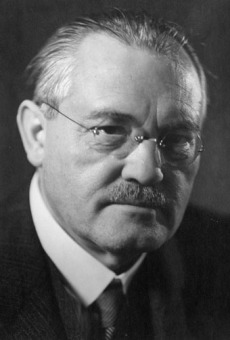Carl Bosch (1874–1940)

© Archive of the Max Planck Society, Berlin-Dahlem
Carl Bosch was born in Cologne on August 27, 1874, the son of a well-to-do plumbing supplier. After completing an apprenticeship as a metal worker, he studied mechanical engineering and metallurgy from 1894 to 1896 at the Technical University of Charlottenburg, followed by the study of chemistry from 1896 to 1898 in Leipzig. During this time he joined the student fraternity Cimbria. He concluded his studies with a doctorate in organic chemistry (dissertation topic: “On the condensation of disodium-acetone-dicarbonic acid-diethyl ester with bromacetophenone”). One year later, he began work as a chemist in the Indigo Division of BASF. In 1902, Carl Bosch married Else Schilbach; the couple had one daughter and one son.
At BASF, by 1913 Bosch had developed a process for synthesizing ammonia on an industrial scale (Haber-Bosch process). In World War I, he was the manager of I.G. Farben’s Oppau plant. Without the industrial-scale production facilities for making ammonia (“saltpeter pledge”) that Bosch set up in only a few months, efforts to supply explosives to the Reichswehr in World War I would have collapsed in a short time: By the war’s end in 1918, BASF was producing more than 500,000 tons of ammonia annually for the arms industry. The same year, Carl Bosch, the “originator of fertilizer production – turning air into bread,”[1] was awarded the title of professor by the Royal Bavarian Government. Bosch, as an authority on the chemical industry, was delegated to serve as a consultant during the groundwork for the Treaty of Versailles. In 1919, he became CEO of BASF. After 1923, Bosch was engaged in developing a way to produce synthetic gasoline by hydrogenation of coal. In 1926, he became head of I.G. Farbenindustrie AG, and it was he who initiated the construction of the new administrative building in Frankfurt am Main. In 1931, Carl Bosch and Friedrich Bergius were jointly awarded the Nobel Prize for Chemistry for the development of chemical high-pressure methods.
In 1935, he became chairman of the supervisory board of I.G. Farben; in addition, he was a member of the supervisory boards of Degussa, Dynamit AG Troisdorf, and Rheinmetall-Borsig AG, among others. As early as May 1933, in a personal conversation with Hitler, Bosch had hinted at his negative opinion of anti-Semitic legislation, and this difference of opinion permanently impaired the relationship between the two men. Nonetheless, he championed the arms build-up of the Nazi regime and in 1936 became involved in the Lilienthal Society for Aeronautics Research, whose president was Hermann Göring. In 1937, he became president of the Kaiser Wilhelm Society, and in 1938 he was named a “military economy leader” (Wehrwirtschaftsführer). In the last years of his life, Bosch suffered from alcohol abuse and depression. He died in Heidelberg on April 26, 1940.
(SP; transl. KL)
















